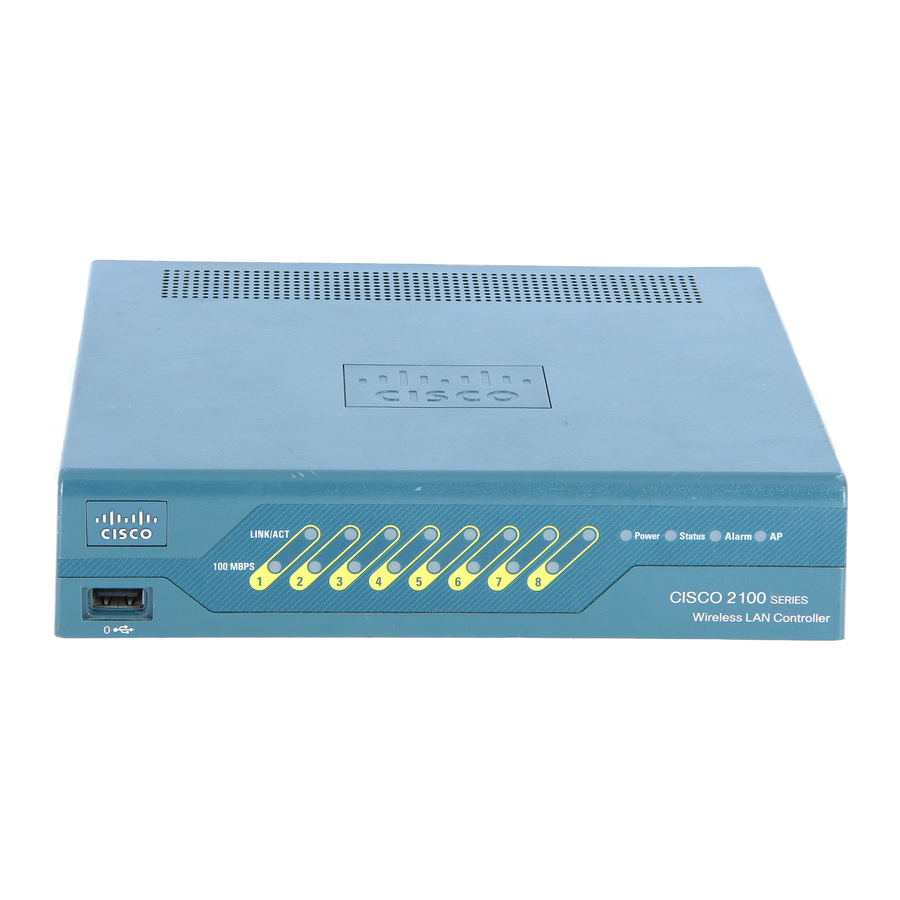Cisco 5500 Series Panduan Instalasi - Halaman 25
Jelajahi secara online atau unduh pdf Panduan Instalasi untuk Perangkat Keras Jaringan Cisco 5500 Series. Cisco 5500 Series 34 halaman. Cisco 8500 series
wireless lan controller
Juga untuk Cisco 5500 Series: Panduan Konfigurasi (40 halaman), Manual (19 halaman), Panduan Konfigurasi (50 halaman)

Note
Enter the IP address of the default DHCP server that will supply IP addresses to clients, the controller's
Step 8
management interface, and optionally the service-port interface.
Note
Step 9
Enter the IP address of the controller's virtual interface, which will be used by all controller Layer 3
security and mobility managers. You should enter a fictitious, unassigned IP address, such as 1.1.1.1.
Note
If desired, enter the name of the mobility group/RF group to which you want the controller to belong.
Step 10
Note
Step 11
Enter the network name, or service set identifier (SSID). The initial SSID enables basic functionality of
the controller and allows access points that have joined the controller to enable their radios.
Step 12
Enter yes to allow clients to assign their own IP address or no to make clients request an IP address from
a DHCP server.
To configure a RADIUS server now, enter yes and then enter the IP address, communication port, and
Step 13
secret key of the RADIUS server. Otherwise, enter no.
Enter the code for the country in which the controller will be used.
Step 14
Note
Enter yes to enable or no to disable each of the 802.11b, 802.11a, 802.11g, and 802.11n lightweight
Step 15
access point networks.
Enter yes to enable or no to disable the controller's radio resource management (RRM) auto RF feature.
Step 16
Note
78-18998-01
The VLAN identifier should be set to match the switch interface configuration.
The management interface is the default interface for in-band management of the controller and
connectivity to enterprise services such as AAA servers.
The virtual interface is used to support mobility management, DHCP relay, and embedded Layer
3 security such as guest web authentication and VPN termination. All controllers within a
mobility group must be configured with the same virtual interface IP address.
Although the name that you enter here is assigned to both the mobility group and the RF group,
these groups are not identical. Both groups define clusters of controllers, but they have different
purposes. All of the controllers in an RF group are usually also in the same mobility group and
vice versa. However, a mobility group facilitates scalable, system-wide mobility and controller
redundancy while an RF group facilitates scalable, system-wide dynamic RF management.
Enter help to view the list of available country codes.
The auto RF feature enables the controller to automatically form an RF group with other
controllers. The group dynamically elects a leader to optimize RRM parameter settings, such as
channel and transmit power assignment, for the group.
Cisco 5500 Series Wireless Controller Installation Guide
Using the Startup Wizard
25
